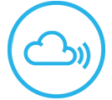Welcome to the LDN Radio Show brought to you by the LDN Research Trust. I'm your host Linda Elsegood.
Dr Steve Zielinski is here today. Can you tell us who are you? What made you decide you wanted to be a pharmacist?
I wanted to be a pharmacist because my dad was a pharmacist, and I liked it when he'd take me to work when I was a kid. I got to see him work and how he helped people. People really appreciated it. I wanted to do the same thing.
How did you get into compounding?
When I was in pharmacy school we were learning how to make stuff in the lab, and I was interested in making stuff. I like to cook a little bit, and compounding was just like cooking to me. That is what got me into compounding.
Could you tell us what forms you make of LDN?
We buy it as a bulk powder and we can make it into anything essentially. The forms of LDN we typically make are capsules, which are pretty standard. We also do a troche and we do a liquid, like an oral solution. Now we're working on transmucosal films. Those are films that you can put on the inside of your gum and it gets absorbed through the cheek. Some people complain about the troche taking a long time to dissolve and having to sit under their tongue for a long period of time. One of the things that we've started to learn to make are films that go on the inside of your gum or on the inside of your lip, almost like chew or something similar. It then gets absorbed through the skin.
Did you learn about LDN in pharmacy school?
I learned about naltrexone in pharmacy school. I heard it was great at 50 milligrams for treating alcohol and drug dependencies. I never learned about it at the doses that I'm using it for or the conditions that we're seeing it be beneficial for in pharmacy school.
So how did you hear about LDN?
Being a compounding pharmacy people would ask me, "Hey do you make low dose naltrexone?" That’s how I heard about it a lot of times. I often hear about things from other people that are wanting to learn more about it. Then it makes me learn more about it; or I get stuck in a position where I need to learn more about it because I don't know much about it, to be honest. I definitely don't claim to know everything about pharmacy, or medicine, or drugs, but when I get a question and I want to find out the answer I go and look it up. That's what I did. That's how I got started with low dose naltrexone.
How long ago was that?
I want to say close to five years ago. People were coming in looking for it for different conditions, and specifically pain, and I suggested this because it is low dose, not habit forming. I thought I'd give it a shot for somebody. We did and it worked.
How many patients do you think you have on low dose naltrexone right now?
Probably about 30 or so patients on it.
How many doctors are sending scripts to you?
About 10 or 11 right now.
If you have 10 or 11 then they haven't got many patients each on LDN. What would you say is the stumbling block for them not to prescribe it more widely?
I don't think they're aware of all the different things it can be used for. I think that's the biggest issue. I think the biggest stumbling blocks are having a good understanding of it for what they could be using it for, and then I think another stumbling block is the dosing of the medication. There's not a package insert that comes with this like there is for every other medication. You can't look this little drug up in the Physician Desk Reference and see how you prescribe low dose naltrexone.
That's not there, but you know if you look up naltrexone, you're going to see a 50 milligrams dose and how to use it, but you're not going to see the different doses that could be used for in a different dosage forms. That's available from a compounding pharmacy. I think that's one of the hindrances that we see with this medication being prescribed.
Did you know the LDN Research Trusts have three guides on our website.
Those are great references that I'd love to make available to the prescribers that I work with.
It's on the LDN Research Trust.org website under resources called LDN Guides that might be a benefit to you and your doctors. Many pharmacists that have been doing LDN for many years will have a seminar in their pharmacy and have an evening where they invite doctors to come. You give them a presentation and explain it to them.
Can you explain what conditions LDN could be used for treatment? Pick a couple and give some case studies. Tell them that you are available to answer their questions. I'm sure there are thousands of people in your area who have either chronic pain, mental health issues, autoimmune disease or cancer. The number of people you know that could be using LDN is endless. Anybody who's in your area who would like to help you expand the client database to get more doctors prescribing LDN in your area would be amazing. It would be great to see yourself grow.
I think we end up using it as an option a lot of times when other things fail. I think that's how we get people started on it for the most part. The most interesting one has been with hair loss post COVID. I think it has been really interesting to see when people have been having their hair falling out. Whether it's from having COVID or exposed to COVID or don’t know what it is, I don't know the diagnosis but we try treating hair loss and nothing's working and then we try low dose naltrexone and it works. It has been a new one for me.
Having COVID happen and the pandemic and everything has been a springboard for low dose naltrexone because LDN works so really well for long COVID. There are two chapters in the LDN Book Three that address long COVID, and you can hear Professor Angus Dalgleish saying that he's a cancer oncologist. He also is a virologist. He treats people with long COVID and he says that it should be a first line of treatment because patients do so well on LDN. He said some people have said it's placebo and that there's nothing to this treatment. He says that once they stop LDN all their symptoms come back. When they restart the symptoms go away. You then know it can't be placebo. It should be a first line of treatment. When people have COVID, you know they are worried about getting long COVID. They should take LDN. It really a game changer for them. There are people who have had chronic fatigue for years. Years ago they were dismissed as being imaginary or told it's depression. There is nothing wrong with you. Deal with it. Now COVID has come along and some have similar symptoms and all these people are saying who've got long COVID. Fatigue is terrible. It's absolutely awful and that's been around for a long time. People who had it were not believed. I think it is going to raise awareness that will help people with chronic fatigue syndrome. People recognize it as a condition and not just an imaginary condition.
You said with chronic pain, are people using it to wean off of opioids? Are they using it once they're off the opioids? What I'm trying to say is, are you using micro-dosing LDN alongside of opioids to get patients off the opioids?
Yes and it's really interesting to see because there's a lot of hesitation and nervousness by the prescribers to do that, because but it's such a low dose that you can wean somebody off of opioids and morphine with it. We've been successful with it and it's been pretty neat, because when you're dealing with long-term chronic pain, to use something that doesn't cause you the side effects, constipation and things like that, on top of the opioid addiction. It's pretty nice to have that in your in your toolbox as not every doctor has that, because they have that tool in their toolbox they could use, but they hesitate because of not understanding how low dose naltrexone is going to work in combination with a stronger pain medication like an opioid. It always amazes me that there are people who have had chronic pain for 20 years and they have taken the highest dose of Oxycodone, they then have another fentanyl patch put on and they end up with this cocktail of pain medication. They have to take other medications to combat the side effects that these medications have caused and their pain is still a nine to a ten every day. This time they can't come off those pain medications. They're addicted to them, although they're not working and my understanding being non-medical that these high doses of pain medications are very bad for your organs. They are damaging themselves at the same time as it's not working.
To actually take a micro dose alongside of those medications where you don't have to reduce the dose initially everything stays the same. You're not going to go through withdrawal. You're not going to feel your security blanket has been taken away from you, but it does make the opioids you're on more effective. That means you can titrate the opioids down while titrating up the naltrexone and people come off it and I'm happy when people say for 20 years they've suffered. They've come off the opioids. They didn't go through withdrawal. People say that they feel no pain anymore but some will say I still have pain but it's a three or a four and I know it's there but it doesn't stop me from carrying on to live a normal life. I can still achieve what I want to achieve. The pain isn't stopping me and I think from the LDN point of view that is just totally mind-blowing because you think of these opioids as being like a sledgehammer. The LDN being a feather, you think how can it properly be effective but you've seen it too. I have seen it and I think it's really very interesting because people don't just come off of their opiates when they go on LDN.
That's where they start. They start coming off of their pain medications with the hardest ones first but then the longer and longer they stay on the low dose naltrexone more things can start falling off after that as well. It's really interesting to see the same doctors that are hesitant to start the low dose naltrexone for people on chronic pain medications to be the ones that would be the one recommending that and not the next pain medication. I had a patient that was on a morphine equivalent and maybe an oxycodone or Oxycontin or something like that at the same time for chronic pain and it wasn't going away and he was on there for about two years and then something about nerve pain was mentioned and neuropathy. I had recommended using low dose naltrexone and he used it and then the doctor started titrating the doses of these medications away and it wasn't just those two it was also other things. There was Topamax for pain that wasn't needed anymore. You're not just relieving a couple of medications, it's a lot of medications. It starts with a couple and we titrated it up slowly at the same time of weaning them off of one of the pain medications. Then once he was comfortable without one of the pain medications then he learned that he could also stop a second pain medication. This was a period of maybe six to eight months and over six to eight months that he was opioid free. No morphine, no opiates. Strictly just using low dose naltrexone with other muscle relaxants as well. Then a year later or two years after that he was even able to stop some of those. It's not just stopping opiates it's stopping other medications as well.
I know some people who had fibromyalgia or who have fibromyalgia who were taking like 14 different medications a day and some of them have got down to just taking two or three including LDN. That has to be better for your system. The less medication you're putting in your body the better. Obviously medications are important when your body isn't working correctly and you are in a lot of pain. Sometimes if the necessary evil is but I think it's a good starting point to see what alternative dosage forms and treatments can do. I think that's what I really like about it is because I kind of play and not play, but I kind of work in a pharmacy where I'm doing both nutrient depletion compounding and traditional medicine. It's not one side or the other, but how do you use them both together, and I think when you can use something that can get an effect that the doctor wasn't aware about, or wasn't completely knowledgeable about, and it works, it starts getting people interested in their own health and seeing what else is out there. I think that's the best thing about low dose naltrexone. It's one of those things that does just that because it's okay what is possible because my pain was forever and now it's gone. I had to use these opiates forever and now I don't. Once you do this and they get that X they get exposed to that then they start taking their health in their own hands.
The favorite part of this drug is people start taking control of their own health. They can bring questions and stuff, but ultimately they take control of their health back in their own hands. Doctors if they were listening to you and work out, I think that's something we do well is we only have about 30 to 35 people. I think low dose naltrexone, but I think that's one thing we do is we run into all those stumbling blocks, those challenges. We can make the recommendation that they should do it but it's something that their doctor ultimately has to make the decision on, and so we try to equip them, to empower them to have the right information in their hands. This is where it's worked before. How can I start trying this or how can I take this step? I think that's what we do pretty well. Not with just low dose naltrexone, but all medications. If a patient has a high blood pressure and they're not sure which medication is causing it, maybe they have two or three different blood pressure medications, pharmacists are in a great position to be the advocate of saying talk to your doctor about this blood pressure medication and see all the time these medications have a risk and reward. If a medication has more risk or more downside than the actual benefit but low dose naltrexone there is a lot of good literature out there. Whether it's a case study or a larger study on multiple people or case reports or controlled trials they're out there. The data's out there. There's plenty of evidence to support using it to where it's still evidence-based medicine that we're practicing.







